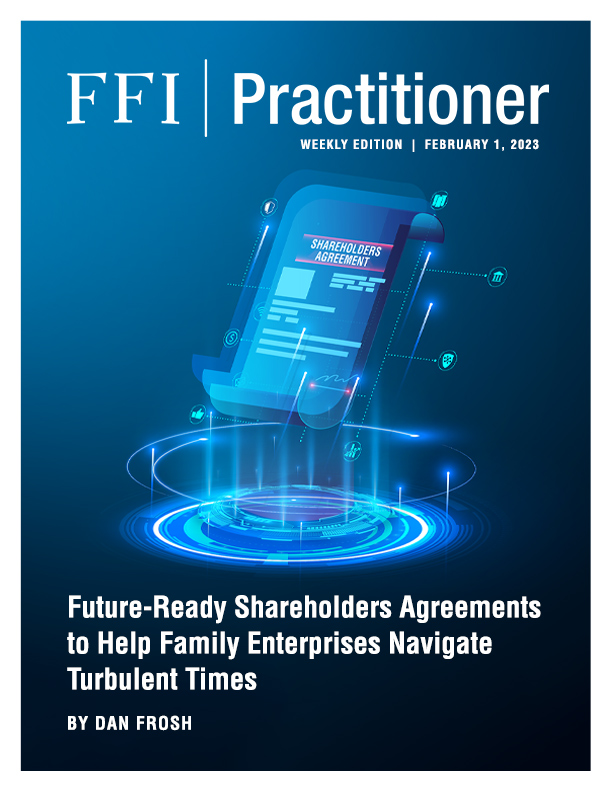
Family owners have the ultimate responsibility for guiding the future of their enterprise and are empowered to make important decisions to grow its value—be it economic, social, reputational, or relational value. Among the most important decisions that owners must excel at making to grow the value of the enterprise include:
- Setting the Strategic Vision for the enterprise, including defining what the family wants to achieve and collectively own.
- Making prudent bets on Capital Investments, including when to get out of bad bets and how best to allocate capital across the portfolio of jointly held assets and opportunities.
- Making good bets on Key People and Talent, as well as knowing when to move on from an ineffective hire, which can be especially difficult for family businesses.
- Setting, protecting, and adjusting the Culture so that it reflects the family’s values, fosters innovation, and contributes to the family’s reputation and legacy.
- Designing the right family enterprise Governance structures, practices, and policies to foster effective decision-making and clarify roles, responsibilities, and rights for the key stakeholders.1
This article explores key considerations and strategies for advisors to help their clients to manage this transition effectively, helping to ensure the longevity and success of their family enterprises.
Distributed Ownership and the Need for Collaborative Decision-Making
The founding generation often experiences unitary ownership control of the family business, with a single individual or spousal couple responsible for making significant ownership decisions. As ownership of the business transitions to the next generation, it often gets distributed among multiple siblings in the second generation. This shift in ownership dynamics can lead to new challenges, including the need to align diverse interests and maintain effective communication to achieve a collaborative process.
Involving multiple owners in decision-making requires creating processes that foster appropriate collaboration and inclusivity of potentially diverse perspectives. To help achieve this collaborative environment, advisors can help their family clients to develop a cohesive team of future sibling owners prior to the transition of ownership. This can potentially be accomplished through the development of a collective owners’ vision for the future of the enterprise that is based on the family’s core values. Additionally, providing opportunities for future next-generation owners to work together on meaningful projects can also help teach a team of siblings how to work and communicate effectively with each other.
Sidebar
By: Dan Frosh
Involving Family Members Not Active in the Business
A defining characteristic of the founder generation is that the controlling owner is often deeply involved in the day-to-day management and operations of the business. However, by the second generation, it can be common for some of the founder’s children not to be as actively engaged in the operations of the business—either due to increasingly siloed roles inside the business or due to their pursuit of career paths outside the family business.
Family members who are not actively involved in the business can form a distinct group within the sibling cohort, often with significantly less knowledge about daily operations or the challenges confronting the business. Effective information-sharing processes and forums for discussing high-priority matters become increasingly necessary and advisors can have an important role in helping family clients to design effective methods of sharing easily digestible information. One option may be for an advisor to help the family to design an owners’ dashboard—a comprehensive, visual tool designed to provide family owners with a clear, real-time overview of key performance metrics and critical information about the business. It serves as an effective communication and decision-making aid, helping family members—especially those not actively involved in day-to-day operations—stay informed about the health and performance of the business.
Formalizing Ownership Governance
As ownership becomes more distributed in the second generation, formalizing the family’s ownership governance structures and practices can also represent a critical step to help facilitate complex decision-making processes and manage the potentially diverse knowledge and interests of family members. Introducing new governance forums, such as an owners council, can serve as a forum for the family owners to discuss and debate important ownership matters as well as to receive regular updates about the performance of the business or other collectively owned investment activities.
With multiple owners involved, the potential for conflicts increases. Ownership agreements often need to be updated to include effective conflict resolution mechanisms and deadlock provisions, which can be essential to maintaining harmony and avoiding litigation. Mediation, arbitration, and structured conflict resolution processes can provide frameworks for resolving disputes amicably. Advisors should work with families (and their attorneys) to update their ownership agreements as part of their preparation for the eventual generational transition.
Conclusion
The evolution of ownership decision-making from a founder to the next generation in a family enterprise is a complex process that requires careful planning and strategic guidance. Family enterprise advisors play a crucial role in helping families navigate this transition by promoting collaborative decision-making, formalizing governance structures, clarifying roles and responsibilities, and implementing effective conflict resolution mechanisms. By addressing these key considerations, advisors can help ensure that family businesses thrive across generations, maintaining their legacy and achieving long-term success.
References
1 Davis, John A. n.d. “Families Today Must Think Like Owners.” Cambridge Family Enterprise Group. Accessed June 12, 2024. https://cfeg.com/insights_research/families-today-must-think-like-owners/





